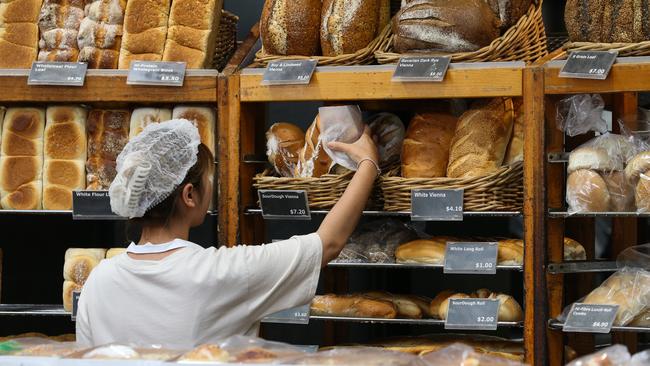Workers bear brunt of cost-of- living squeeze as hip-pocket pain eases
While the financial strain continued to ease in the December quarter, new figures reveal that workers faced the sharpest rise in their living costs of all household cohorts.

Living costs for Australian workers grew at nearly double the headline inflation rate over the past year due to elevated mortgage repayments, fresh figures show as Anthony Albanese and household borrowers hold out for an interest-rate cut in two weeks’ time.
The Australian Bureau of Statistics’ latest cost-of-living index, released on Wednesday, measures how price changes are felt by certain households based on how they spend their money.
The data showed “employee households” – those whose primary income source is wages and salaries – had the most significant increase in their living costs among all household cohorts, as their expenses rose 0.4 per cent in the three months to December.
Although the household cost of living figure was the smallest quarterly increase since June 2022, and brought the annual growth in employee household living costs to 4 per cent, it still far outpaced the headline inflation rate of 2.4 per cent over the same period.
The discrepancy between the two figures is largely due to mortgage repayments being captured in the living costs index, while they are excluded from the inflation reading.
“While the growth in employee households’ living costs has … slowed this quarter, these households continued to see higher rises than others as they are more impacted by mortgage interest charges,” said Michelle Marquardt, the ABS’s head of price statistics.
Even as the cash rate held at 4.35 per cent through the December quarter, employee households in aggregate experienced a rise in their mortgage costs as borrowers continued to roll off super-cheap fixed-rate loans of roughly 2 per cent and onto more expensive variable-rate loans of between 5 and 6 per cent.
The share of owner-occupier loans on fixed rates now stands at just 15 per cent, the ABS said, well below its peak of 45 per cent in early 2022, before the RBA embarked on its aggressive run of interest rate hikes.
Self-funded retirees experienced the second-highest increase in their living costs, rising 0.3 per cent during the December quarter.
By contrast, aged pensioners and other households whose main source of income were welfare payments experienced a slight reduction in their living expenses, falling 0.1 per cent over the same period.
That fall was the first quarterly decline in living costs in more than three years. The ABS attributed it to an increase in Commonwealth Rental Assistance and a higher proportion of households eligible for the Pharmaceutical Benefits Scheme.
While prices for most goods and services continued to rise, those increases were largely offset by a decline in electricity prices as millions of households benefited from the first two tranches of Labor’s $300 power bill rebates as well as additional state-based support.
Lower automotive fuel prices additionally benefited households across the quarter, the ABS said, as motorists received relief at the bowser.
The fresh figures came as Jim Chalmers on Wednesday evening faced business leaders in Canberra amid warnings from corporate Australia that elevated public spending and increased government regulation risked undermining economic growth.
Echoing similar comments he made following the release of weak national accounts data in December, the Treasurer said the private sector would ultimately be responsible for pulling Australia out of the worst economic slump since the early 1990s recession.
“We know that the best kind of strong and sustainable economic growth means growth led by the private sector,” Dr Chalmers told an event hosted by the Business Council.
“Our economy is at its best when it’s private companies powering growth and propelling us forward.”
With heightened hostility between corporate Australia and Canberra, in part owing to Labor’s industrial relations changes, Dr Chalmers signalled the government sought a collaborative approach with private sector.
“We want to work with you on the economy to take the country forwards, together,” he said. “We know we wouldn’t be approaching this soft landing without you.”




To join the conversation, please log in. Don't have an account? Register
Join the conversation, you are commenting as Logout